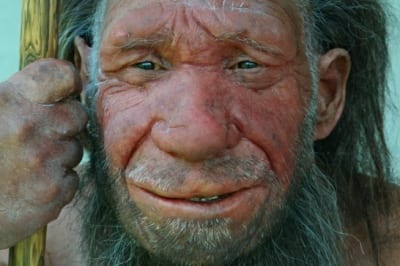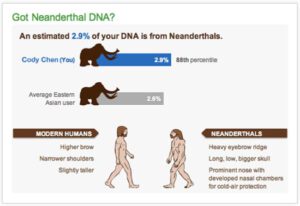
Did they really “do it?”
We’re not talking about actress Kristen Stewart and her “Snow White and the Huntsman” director; We’re talking about Neanderthals and modern humans.
Without meaning to get all People magazine on you, the question about whether modern humans and Neanderthals hooked up has again become a subject of scientific debate.
The short answer is yes, they had sex. At least, based on the science it certainly appears there was indeed “interbreeding” between modern humans and Neanderthals.
But a counter argument published in PNAS, asserts that the shared DNA found in both modern humans and our Neanderthal cousins may have come from common African ancestors. Since the paper’s publication there has been a lot of coverage in the popular press, as well as science-centered publications.
Several researchers have said the model supporting the theory that the shared DNA comes from a common African ancestor is wrong. Beyond that, the science done to support the theory of interbreeding actually took into account the idea that is the cornerstone of their theory and debunked it.
Or as Discovery magazine blogger Razib Khan observed, “One could say that the appropriate follow up paper to the PNAS contribution was actually published before it.”
23andMe scientist Eric Durand, a computational biologists who helped work on the first draft of the Neanderthal genome and on analysis of the Denisova genome– another of our early human cousins – said much the same thing.

“It is surprising that such a paper got published – and received so much press coverage – as the initial paper explored such a demographic model of ancient structure and wrote in the main text that it could explain the data,” Eric said. “At this time we simply regarded this model as less parsimonious than the recent admixture model, because the ancient structure model implies that barrier to gene flow consistently separated highly adaptable hominins for hundreds of generations.”
Beyond that paper published in Science two years ago, Eric worked with others from UC Berkeley on a paper published earlier this year, using another statistical approach that also undercuts the theory that a common African cousin explains the shared DNA between modern humans and Neanderthal.
What’s more exciting for Eric is that this more recent paper uses a new methodology to estimate that the interbreeding occurred between 37,000 and 86,000 years ago, or about the time when modern humans began their slow migration from Africa to Europe.
The estimate “actually coincides pretty well with the estimated time of the ‘out-of-Africa’ event,” Eric said.
Got Neanderthal DNA?
23andMe customers can find their inner Neanderthal or at least how much Neanderthal DNA they have at 23andMe Ancestry Labs. Not yet a customer? Visit our store!



